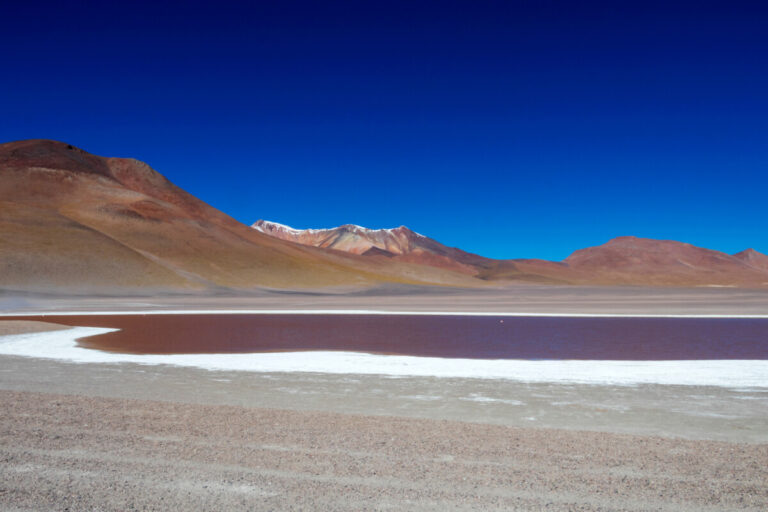The transaction value of the ton was US$34 thousand, well below the US$54 thousand in the second quarter of 2022. This is the lowest price since the last quarter of 2021 – when it averaged US$15 thousand – and far from the record of the fourth quarter of last year, when the price reached US$59 thousand per ton, 42% more than the last record for non-metallic mining. Source: Emol, August 22, 2023.
Last week SQM presented the results for the second quarter of 2023. In the instance, two pieces of news caught attention: the 32% decrease in profits and the sharp drop, of 37%, in the average sale price of lithium, compared to the same period last year. And the transaction value per ton was US$34 thousand, well below the US$54 thousand in the second quarter of 2022.
This is the lowest price since the last quarter of 2021 -when it averaged US$15 thousand- and far from the record of the fourth quarter of last year, when the price reached US$59 thousand per ton, 42% more than the last record by non-metallic mining.
The mining company’s figures motivated a series of questions: Is the lithium boom over? Will prices stabilize? Are we in time to take advantage of them? And if so, how much should institutional modifications be rushed?
Rodrigo Dupouy, president for Latin America of Ensorcia Group (Sorcia Minerals), opened the debate in the pages of El Mercurio. For the lawyer, the “boom” has probably already passed, however, “this is still a good price, but it is a clear sign that the value of lithium is moving away from the peaks we saw months ago, which means that if Chile wants to take advantage of this opportunity, it must do so now. Whether through the National Lithium Strategy or making this mineral affordable, an idea that has gained strength in recent weeks.
Likewise, he noted that “in any case, there are at least 10 years of good lithium prices left.”
“What matters,” Lagos added, “is the average price for the next two years, and that should be quite high, at more than US$30,000, surely around US$40,000 per ton. After 2025 it may drop a little, but it will still be very good. And why will it be very good? Because it turns out that the production of the Atacama salt flat is the lowest cost in the world. So, the rent is very high. And that suits Chile.”
The academic also pointed out that the price “will never stabilize, there will be volatility.” The reasons? As he explains, the price of lithium will change due to production announcements or announcements from China or other countries.
Juan Nagel, an academic at the Faculty of Economics and Business Sciences at the Universidad de los Andes, agreed with this analysis. “Lithium is a mineral with volatile demand, which depends on many factors,” he noted. According to him, among them are the entry of new players into the market, changes in consumer preference for electric cars, and fluctuations in the prices of minerals that are used in conjunction with lithium in the manufacture of batteries.
The economist added that “it is expected that in the coming months, there will be a slight rise in prices, but no one can predict with certainty by how much.”
What is missing to take advantage of the price of lithium?
The perception that has established itself is that the country has not managed to quickly address the challenges of the industry, in the midst of the Government’s efforts to carry out a National Lithium Strategy with a predominant role of the State, and that, therefore , the opportunity to generate greater income has been wasted.
Lagos explained that several things are missing. «First – he pointed out – that the agreement between Codelco and SQM be signed. Secondly, this terrible thing that they changed all the authorities of the Ministry of Mining, so we started from scratch (…) If the government is intelligent, it will make the tenders in such a way that they can be competed and won and built. “If you do the bidding improperly, that’s not going to happen.” He added that “the problem is that the two tenders that have been carried out in the last 10 years have been failed because they have been poorly done.”
Furthermore, he maintained, a successful tender today is more complex than previous tenders, because now the participation of the state is wanted. “If they put more than 50% state participation,” he explains, “I would tell you that the matter becomes very complex.”
Rodrigo Dupouy, on the other hand, pointed out that “if Chile steps on the accelerator, it can still arrive on time. But for that, the first thing is to clarify the institutional landscape and, secondly, apply more efficient technologies in extraction.
Juan Nagel, meanwhile, said that “production decisions should be made independently of the spot price that may exist at a given time. Lithium will continue to be in demand in the short and medium term, and Chile has inherent advantages that make it an attractive supplier. The academic also added that “in the medium and long term it is very convenient to facilitate the energy transition towards green energy.”

